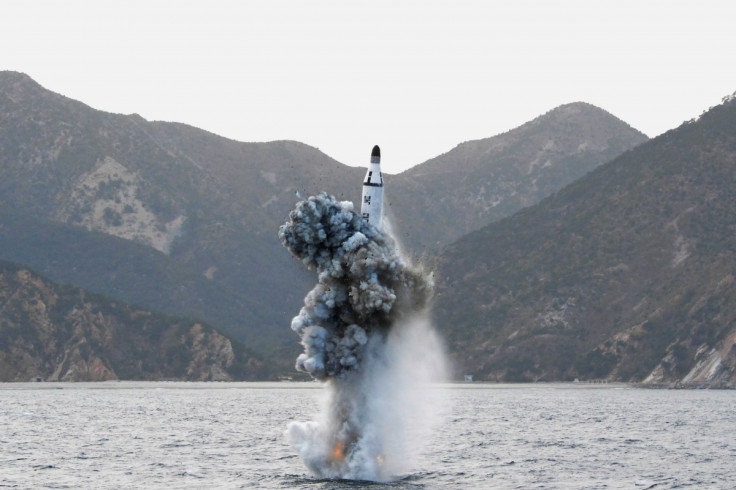'Unusual' activity in North Korean submarine could signal another missile test
US officials say the submarine could be preparing to test the underwater launch system for a missile
US forces have reportedly detected "highly unusual and unprecedented levels" of activity in a North Korean submarine signalling that preparations for a major test could be under way.
A US defence official told CNN on the condition of anonymity that the activity could indicate the North is gearing up for an "ejection test" – a critical stage in submarine-based missile launch capabilities.
The test will allow inspecting the missile's "cold-launch system" which employs high pressure steam to eject the missile out of the launch canister into the air before its engine ignites. This is done to prevent damaging the submersible from where the missile is launched.
If confirmed, the "ejection test" could become the third time within a month the North will be defying global opinion as it presses on with its intercontinental ballistic missile (ICBM) programme.
The latest activity was detected in North Korea's Sinpo naval shipyard from where the country had conducted its earlier submarine-based missile test launches.
Pyongyang test-fired its second ICBM late on Friday, 28 July, following which the Kim Jong-un regime said it is now capable of hitting the US mainland. Overseen by the third-generation dictator, the midnight-launch of the missile yet again escalated tensions in the region.
Speaking to Reuters, two American officials said the latest assessment is that the North is capable of hitting major US cities – something which so far has not been shared officially by Washington. Nonetheless, the Pentagon acknowledged that the latest launch marked North Korea's longest test-flight of any missile.
Asked to comment on the North Korean missile's ability to strike the American mainland, Pentagon spokesman Navy Captain Jeff Davis said: "The specifics of our assessment are classified for reasons I hope you understand."
While the first ICBM, the North fired off on 4 July coinciding the US Independence Day, flew for 39 minutes, the second missile on 28 July stayed in the air for 45 demonstrating a longer range.

© Copyright IBTimes 2024. All rights reserved.






